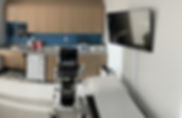Golfer's and Tennis/Pickleball Elbow Defined
Golfer’s elbow and Tennis/Pickleball elbow are similar, except that golfer’s elbow occurs on the inside of the elbow and tennis elbow occurs on the outside of the elbow. Both conditions are a type of tendonitis, which literally means, “inflammation of the tendons”.
Golfer's Elbow
Golfer’s elbow, also called Medial Epicondylitis, is a painful condition occurring from repeated muscle contractions in the forearm that leads to inflammation and microtears in the tendons that attach to the medial epicondyle (the bony prominence that is felt on the inside of the elbow.).
Golfer’s elbow is usually caused by overuse of the forearm muscles and tendons that control wrist and finger movement, but may also be caused by direct trauma, as experienced with a fall, car accident, or work-related injury.
Tennis and Pickleball Elbow
Tennis and pickleball elbow, or Lateral Epicondylitis, is a painful condition of the elbow caused by overuse. Not surprisingly, playing tennis or other racquet sports can cause this condition. Tennis elbow is an inflammation of the tendons that join the forearm muscles on the outside of the elbow. The forearm muscles and tendons become damaged from overuse (repeating the same motions again and again), which leads to pain and tenderness on the outside of the elbow.
Recent studies show that tennis and pickleball elbow are often caused by damage to a specific forearm muscle. The extensor carpi radialis brevis (ECRB) muscle helps stabilize the wrist when the elbow is straight. When the ECRB is weakened from overuse, microscopic tears form in the tendon where it attaches to the lateral epicondyle, which leads to inflammation and pain. This can occur during a tennis groundstroke, for example. The ECRB may also be at increased risk for damage because of its position, because as the elbow bends and straightens, the muscle rubs against bony bumps which can cause gradual muscle wear and tear over time.





TREATMENT OPTIONS FOR GOLFER'S ELBOW & TENNIS/PICKLEBALL ELBOW PAIN
As with most orthopedic conditions, patients will often begin with a combination of physical therapy, anti-inflammatories, ice and rest (and in some cases, steroid injections).
When these methods are no longer effective, Carolina Nonsurgical Orthopedics offers the latest in cutting-edge treatments to reduce pain and get you back to the activities you enjoy. Some of these innovative alternatives to surgery include Orthobiologics and Regenerative Medicine treatments, such as:
-
Platelet-Rich Plasma (PRP) Injections: Use your own platelets to reduce inflammation and accelerate healing.
-
Prolotherapy: Uses dextrose (sugar water) in place of steroid to reduce pain and promote healing.
-
Shockwave: A non-invasive therapy that uses impulses to treat chronic pain and repair tissue.
-
Ultrasound-Guided Tendon Fenestration: Using the ultrasound, we can target the tendon and use a needle to stimulate healing by creating micro-damage to the tendon.
See the full list of conditions and treatments offered at Carolina Nonsurgical Orthopedics.
READ MORE ABOUT GOLFER'S & TENNIS/PICKLEBALL ELBOW PAIN
Athletes are not the only people who get golfer's elbow & tennis/pickleball elbow. Many people with these conditions participate in work or recreational activities that require repetitive and vigorous use of the forearm muscle. Golfer’s Elbow Signs and symptoms of golfer’s elbow can include the following: elbow pain that appears suddenly or gradually, achy pain to the inner side of the elbow during activity, elbow stiffness with decreased range of motion, pain radiating to the inner forearm, hand, or wrist, weakened grip, pain that worsens with gripping objects, or pain that is exacerbated in the elbow when the wrist is flexed or bent forward toward the forearm. Tennis/Pickleball Elbow Painters, plumbers, and carpenters are particularly prone to developing tendonitis of the elbow. Studies have shown that auto workers, cooks, and even butchers can get tennis elbow more often than the rest of the population. It is thought that the repetition and weight lifting required in these occupations leads to injury. Age is also a factor, as people who get tennis elbow are often between the ages of 30 and 50, although anyone can get it if they have the risk factors.


WHY CAROLINA
NONSURGICAL ORTHOPEDICS
-
All Providers are BOARD CERTIFIED and Specially Trained in Nonsurgical Orthopedics
-
Over 50,000+ and Counting Procedures Performed
-
Procedures Performed with Ultrasound Guidance for Accuracy and Safety
-
Local and Independent Practice That is NOT a Franchise
-
Discounts for Service Members, Teachers, and Public Servants
-
Serving Raleigh Since 2013
.png)
